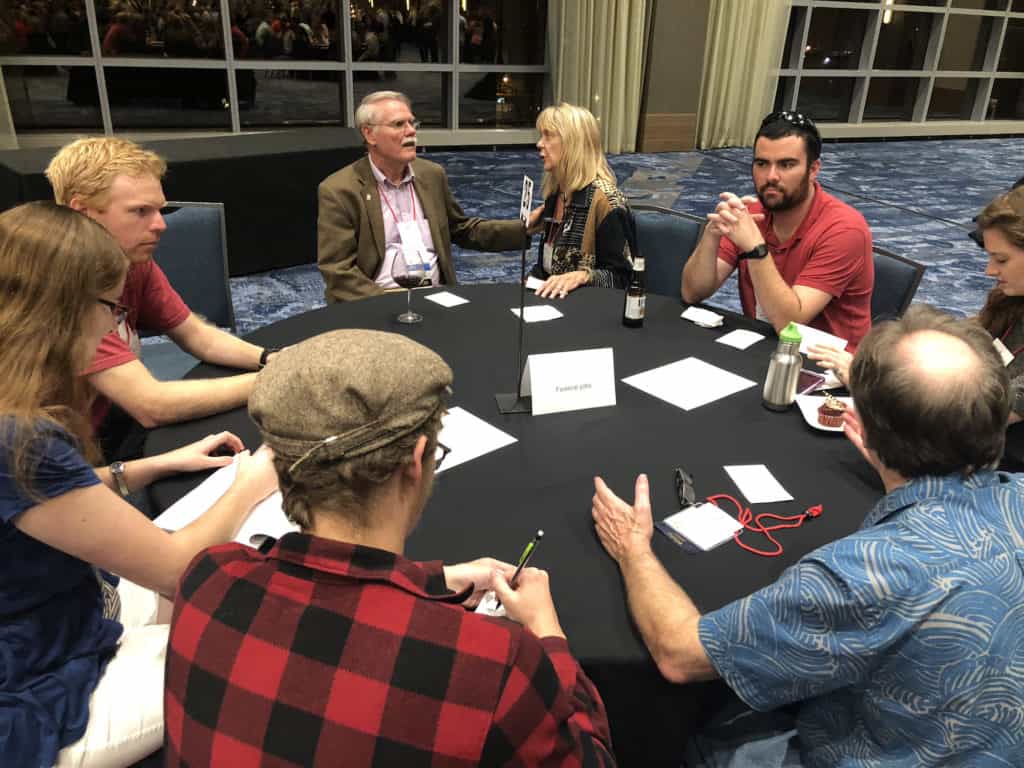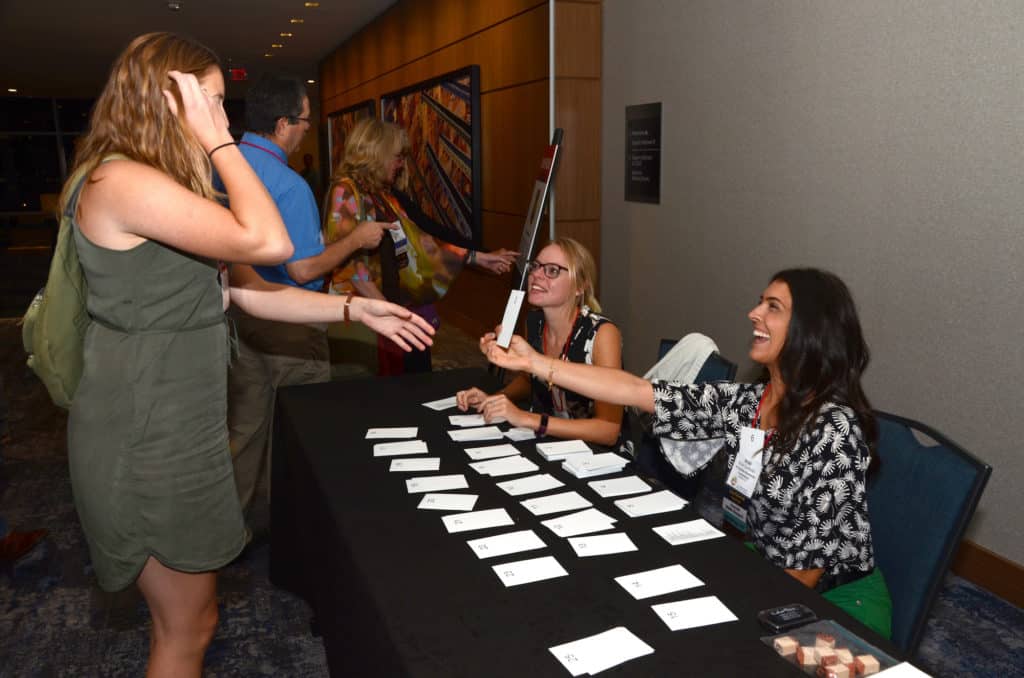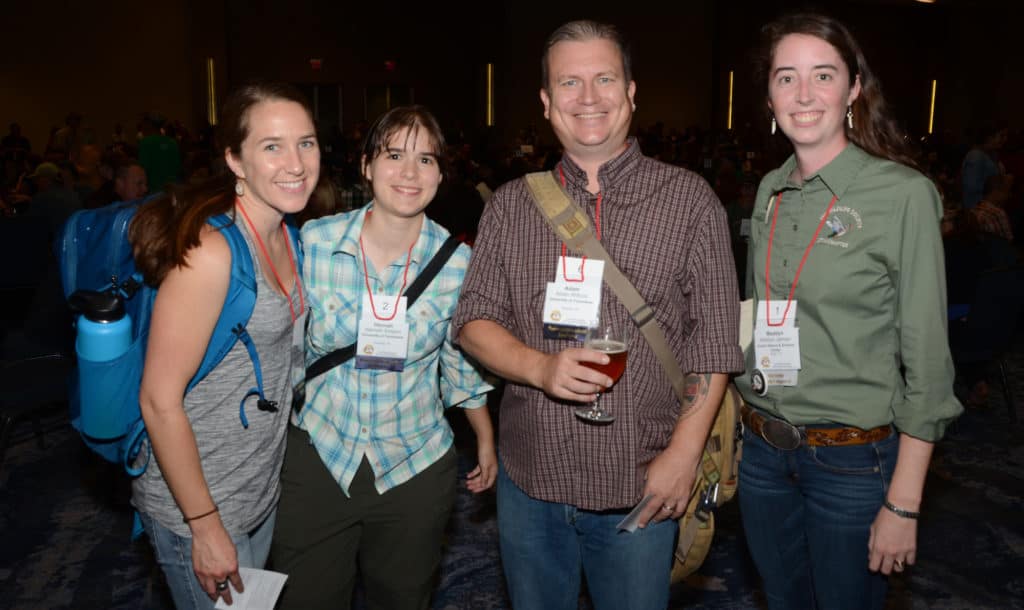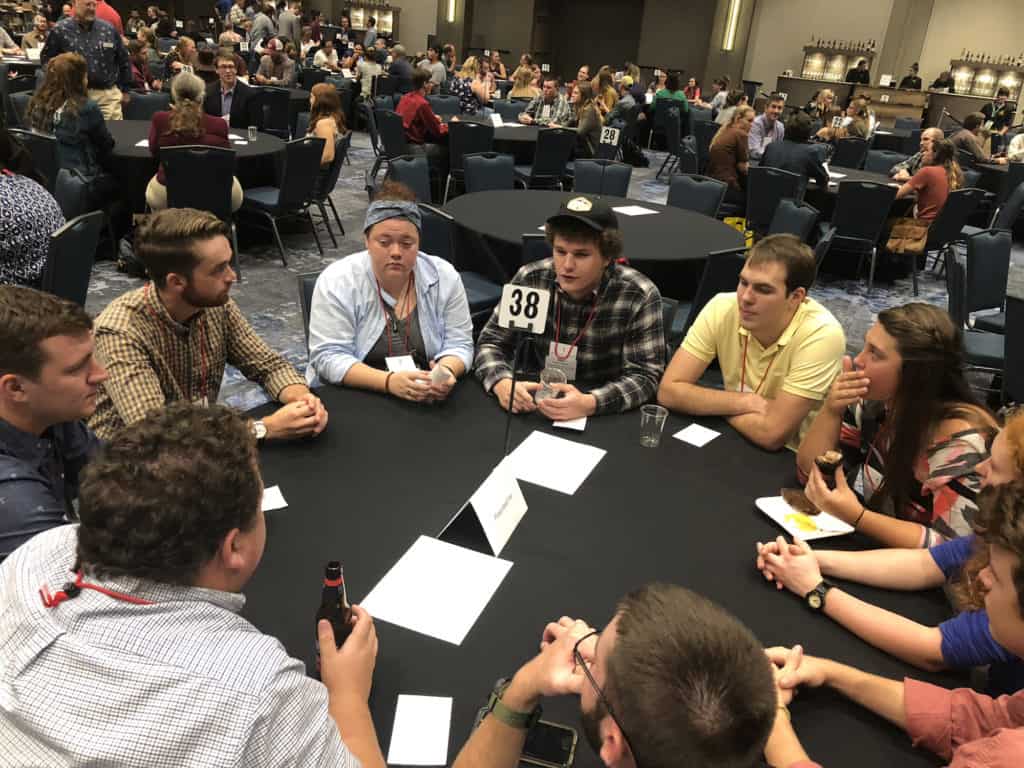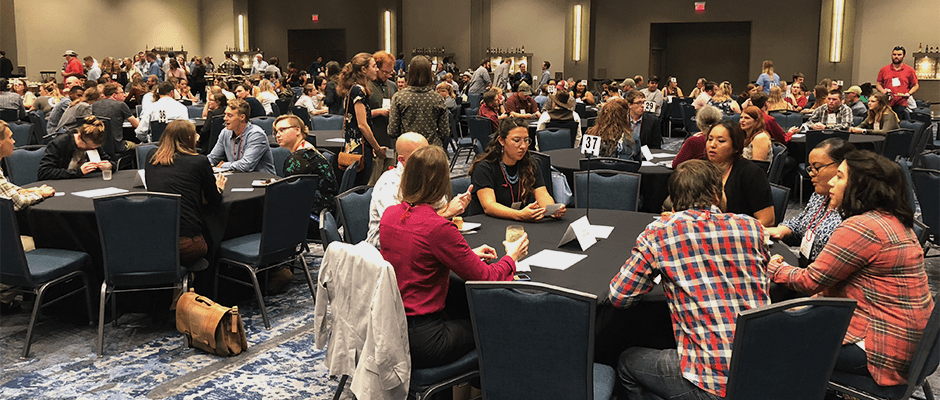Share this article
Students take advantage of networking opportunity
Conferences are a great way for students to get advice and guidance from experienced professionals, but sometimes it’s hard for students to know where to start. This year’s Student-Professional Networking Event provided a structured way for students to learn from seasoned professionals.
“This is a big learning opportunity, and I’m grateful to be here,” said Melissa Ferral, an undergraduate at Clemson University who is attending her first TWS conference. As a sophomore, Ferral wondered if she would benefit as much from the session as seniors who are more seriously looking for jobs, and she did.
“A lot of people say there’s a long time ahead of me before I go to grad school,” she said, but she found getting an early start to be beneficial. “Great advice I got was to try everything and always say yes.”
As part of the event, 40 tables were set up, each table containing a topic related to the wildlife profession, such as the biological diversity working group, state agencies, federal jobs, NGOs, birds, mammals, graduate school and others. Professionals who identified with the topics sat at the tables while students rotated to different tables they were interested in learning more about.
Students were also provided with icebreaker and table talk networking questions to help them start conversations. What one piece of advice would you give to a student or new professional interested in wildlife? What did you learn in your first jobs that helped you work toward your desired career?
Along with the question cards, Kristi Confortin, a member of the Student Development Working Group, also handed out tags with the number of TWS conferences people have attended.
“We want students to talk to people with higher numbers,” Confortin said.
Jim Ramakka is one of those attendees with a higher number — one of the highest, in fact, having attended 24 annual TWS conferences. Ramakka, retired from the Bureau of Land Management, sat at the table for wildlifers interested in federal jobs. “I hope folks will get some sense of where they might be able to direct their careers, but learn from folks who have been in that position,” Ramakka said. “Also, I hope they learn how important The Wildlife Society is.”
At the Ethnic and Gender Diversity Working Group table, Don Yasuda, a wildlife biologist with the U.S. Forest Service, led a conversation about ethnic and gender diversity within the Forest Service. “My background is in wildlife, but my background is also multidisciplinary and brings everybody to a more central place,” he said.
At the Aquatic and Marine Biology table, participants shared stories of working in the field. Christopher Ward, of the University of New Brunswick, said while working in a Honduran community that relies on tourism, he realized how biological issues were connected with how people make their living. “When you do research, you don’t get the perspective of the social aspects,” he said.
Side conversations, away from the tables, also continued between early career professionals and more experienced professionals. One conversation was regarding acoustic monitoring of bats before and after white-nose syndrome.
Some students had more specific goals. “I’m looking forward to more collaboration and even to find a PhD adviser,” said Andrew Butler, a graduate student at Clemson University.
Wildlife professionals were happy to share their career advice and information about the various aspects of their professions. Students in attendance, even the younger ones, impressed professionals at the Student-Professional Mixer.
Heather Johnson, a research wildlife biologist with the U.S. Geological Survey, noticed undergraduate students asking more questions than she would have expected. “It’s cool that undergraduates are taking initiative,” she said.
